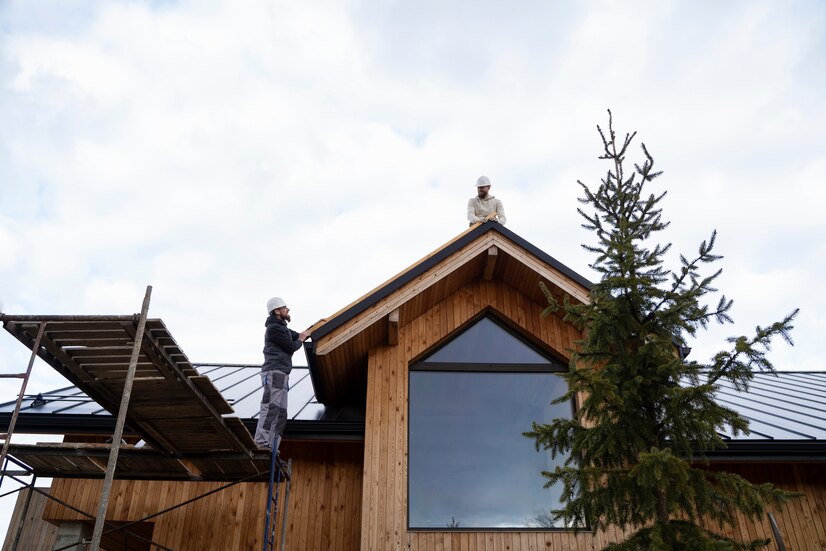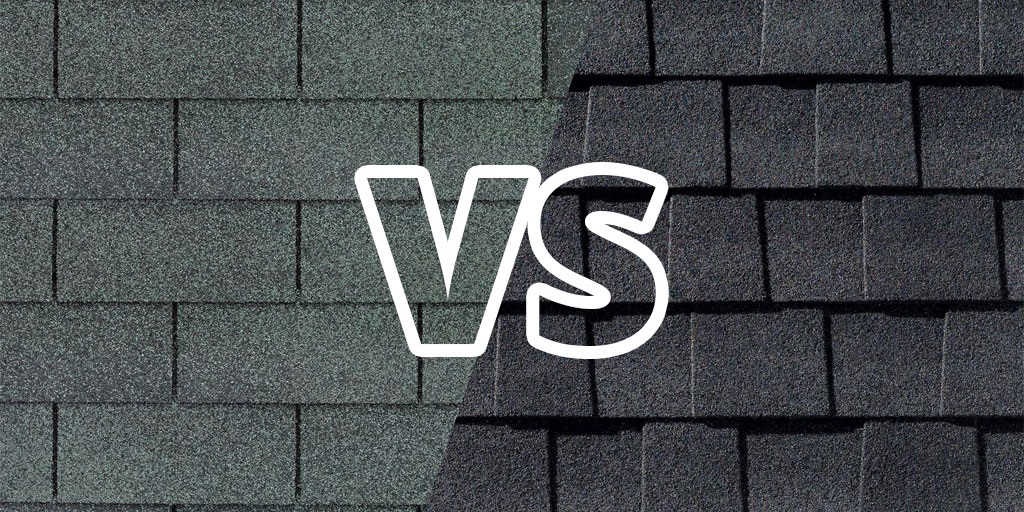The most cost-effective roof design is a gable-style roof with asphalt roofing shingles. It is an affordable and durable option for residential homes.
With a steeper slope and cost-effective construction, gable roofs provide a practical solution for those looking for a long-lasting and budget-friendly roof. They also offer additional benefits such as storage space and temperature control. However, it is important to consider the disadvantages of gable roofs, which include the potential for peeling away in high winds and the risk of collapse if not constructed with sturdy supports.
Despite these drawbacks, gable roofs remain a popular and cost-effective option for homeowners.
Introduction To Gable Roof Design
Looking for a cost-effective roof design? Consider the gable roof, which is known for its affordability without compromising quality. With its steep slope and durable construction, a gable roof is a cost-effective solution for residential homes.
A gable roof design is one of the most popular and cost-effective choices for residential homes. Its simple yet effective design consists of two sloping roof planes that meet at a ridge, forming a triangular shape at each end. This type of roof design offers various advantages and factors to consider when choosing it for your home.
Overview Of Gable Roofs
Gable roofs are characterized by their steep slopes and triangular shape. They are relatively simple to design and construct, making them a practical choice for many homeowners. The gable roof design allows for efficient rainwater runoff, as the steep slope prevents water from pooling on the roof.
Advantages Of Gable Roof Design
Gable roofs offer several advantages that make them a cost-effective solution for many homeowners:
- Cost-effectiveness: Due to their straightforward design, gable roofs are relatively simple to build, making them a cost-effective option compared to more complex roof designs.
- Durable in extreme weather: Gable roofs have a steeper slope compared to other roof designs, making them more resistant to heavy rainfall and snow accumulation. Their pitched shape allows rain and snow to slide off easily, reducing the risk of water damage and potential collapses.
- Increased attic space: The triangular shape created by gable roofs provides extra space within the attic. This additional storage space can be utilized for various purposes, such as storing seasonal items or creating a bonus room.
- Improved ventilation and temperature control: The steep slope of gable roofs allows for better air circulation and prevents heat buildup, contributing to improved comfort and energy efficiency within the home.
Factors To Consider When Choosing A Gable Roof
When selecting a gable roof design for your home, it’s essential to consider the following factors:
- Region-specific weather conditions: Assess the climate in your area and ensure that a gable roof design is suitable. While gable roofs are excellent for rain and snow, they may not be ideal for regions prone to hurricanes or high winds.
- Roof pitch: Determine the ideal roof pitch for your gable roof design based on the aesthetics you desire and the recommendations of a professional contractor. The pitch will affect the overall appearance and functionality of the roof.
- Material options: Explore various roofing materials available for your gable roof design, considering factors such as durability, cost, and visual appeal. Popular choices include asphalt shingles, metal, and clay tiles.
- Structural support: Ensure that your home’s structure can accommodate the weight and additional stress of a gable roof. Consult with a structural engineer or architect to evaluate the feasibility of the design.
Cost-effectiveness Of Gable Roof Design
The economics of gable roof design offer a cost-effective solution for homeowners looking for a durable and affordable roof. With their simple construction and the use of asphalt roofing shingles, gable-style roofs provide a reliable and budget-friendly option. Say goodbye to high roofing costs without compromising quality.
Cost-saving Tips For Building A Gable Roof
The cost-effectiveness of gable roof design makes it a popular choice among homeowners looking for a budget-friendly and durable roofing solution. When compared to other roof designs, such as hip roofs or flat roofs, gable roofs are often more affordable to build and maintain. This makes them an excellent option for those who want a high-quality roof without breaking the bank.
There are several factors that contribute to the cost-effectiveness of gable roofs. First and foremost, the design simplicity of gable roofs makes them easier and quicker to construct, resulting in lower labor costs. Additionally, gable roofs require standard building materials, such as asphalt shingles, which are readily available and cost-effective. The minimal amount of complex roofing elements, such as valleys and hips, further reduces the overall construction costs.
Here are some cost-saving tips for building a gable roof:
- Choose cost-effective roofing materials: Opt for affordable yet durable materials, such as asphalt shingles or metal roofing, to keep costs down without compromising on quality.
- Utilize standard roof dimensions: Stick to standard roof dimensions to minimize waste and reduce material costs. Customized roof designs often require additional materials and labor, increasing overall expenses.
- Consider roof ventilation: Proper roof ventilation can help reduce energy costs by improving air circulation and preventing heat buildup. Install cost-effective ventilation solutions, such as ridge vents or gable vents, to promote energy efficiency.
- Plan for natural lighting: Incorporate skylights or dormer windows into your gable roof design to maximize natural lighting, reducing the need for artificial lights during the daytime. This not only saves on energy costs but also enhances the overall aesthetic appeal of your home.
In conclusion, gable roofs offer cost-effective solutions for homeowners looking to build a durable and affordable roof. By comparing costs, understanding the factors that contribute to cost-effectiveness, and implementing cost-saving tips, you can ensure a budget-friendly and efficient gable roof design for your home.
Considerations And Limitations Of Gable Roof Design
Considerations and Limitations of Gable Roof Design include its cost-effective nature, making it an affordable option for residential homes. However, gable roofs may have overhangs that could potentially cause damage in high winds, and there is also a risk of collapsing if proper support is not implemented in the construction process.
Despite these limitations, gable roofs remain popular due to their simplicity and cost-effectiveness.
Disadvantages And Challenges Of Gable Roofs
A gable roof design offers many advantages, including affordability and durability. However, there are certain disadvantages and challenges that homeowners should be aware of before choosing this style of roof.
- Structural Concerns: Gable roofs have a steep slope, which can make them more susceptible to damage from high wind pressure. In areas prone to hurricanes or strong winds, gable roofs may be more prone to peeling away or even collapsing if not properly constructed with sturdy supports.
- Potential Leaks: The intersecting planes of a gable roof can create valleys where water can accumulate and potentially lead to leaks if not properly sealed and maintained.
- Reduced Attic Space: Gable roofs typically have triangular-shaped attics, which may limit the usable storage space compared to other roof designs.
- Maintenance: The higher pitch of gable roofs can make them more difficult and dangerous to clean, repair, or replace roofing materials.
Addressing Structural Concerns For Gable Roofs
To address the structural concerns associated with gable roofs, it is crucial to ensure proper construction and maintenance:
- Sturdy Supports: The frame and trusses of the gable roof should be constructed using durable and sturdy supports to withstand high wind pressure and prevent collapse. Consulting with a professional structural engineer or experienced contractor is recommended.
- Proper Ventilation and Insulation: Adequate ventilation and insulation are essential to prevent moisture buildup and reduce the risk of leaks or damage to the roof’s structure.
- Regular Inspections: Routine inspections should be conducted to identify any signs of damage, wear, or potential issues that need to be addressed promptly.
- Maintenance and Repairs: Regular maintenance, such as cleaning debris from gutters and roof surfaces, and prompt repairs of any damaged or missing shingles, can help extend the lifespan of a gable roof.
Alternative Options For Roof Design
If the disadvantages and challenges of gable roofs outweigh the benefits, homeowners may consider alternative options for roof design:
- Hip Roof: A hip roof has slopes on all four sides, which makes it more resistant to wind damage. However, it may be more expensive to construct due to its complex design.
- Mansard Roof: A mansard roof features a double slope on each side, providing additional living or storage space in the attic. It offers a unique and aesthetically pleasing design but may be more costly to build.
- Flat Roof: A flat roof is a cost-effective option that allows for easy installation of solar panels, but it requires regular maintenance to prevent water pooling and leakage.
When considering alternative roof designs, it is important to consult with a professional contractor or architect to assess the feasibility and cost-effectiveness for your specific home and location.
Frequently Asked Questions Of The Economics Of Gable Roof Design: Cost-effective Solutions
What Is The Most Cost Effective Roof Design?
A gable-style roof with asphalt shingles is a cost-effective roof design for residential homes. It is durable, provides good protection against rain and snow, and is relatively simple to build. Gable roofs are an affordable option for those seeking a long-lasting roof without breaking the bank.
What Are 3 Advantages Of A Gable Roof?
The advantages of a gable roof are: 1. Gable roofs are tough in rain and snow due to their steep slope. 2. They are cost-effective to construct, making them an affordable option. 3. Gable roofs provide storage space and temperature control as a bonus.
What Is Gable Roof Design Disadvantages?
Gable roof design disadvantages include the risk of peeling away in high winds and the possibility of collapsing if not constructed with sturdy supports. However, gable roofs are cost-effective and provide storage space.
How Much Does It Cost To Build A Gable Roof?
The cost to build a gable roof can vary depending on factors such as the size of the roof and the materials used. On average, you can expect to spend between $10,000 to $25,000 for a gable roof on a residential home.
Conclusion
Gable roof design offers a cost-effective solution for homeowners looking for a durable and affordable roof. With its simple and straightforward construction, gable roofs provide excellent protection against rain and snow. Additionally, they offer ample storage space and temperature control.
However, it’s important to consider the potential disadvantages, such as the risk of collapsing if the roof frame is not properly supported. Overall, gable roofs remain a popular choice for cost-conscious individuals seeking a reliable roofing option.







